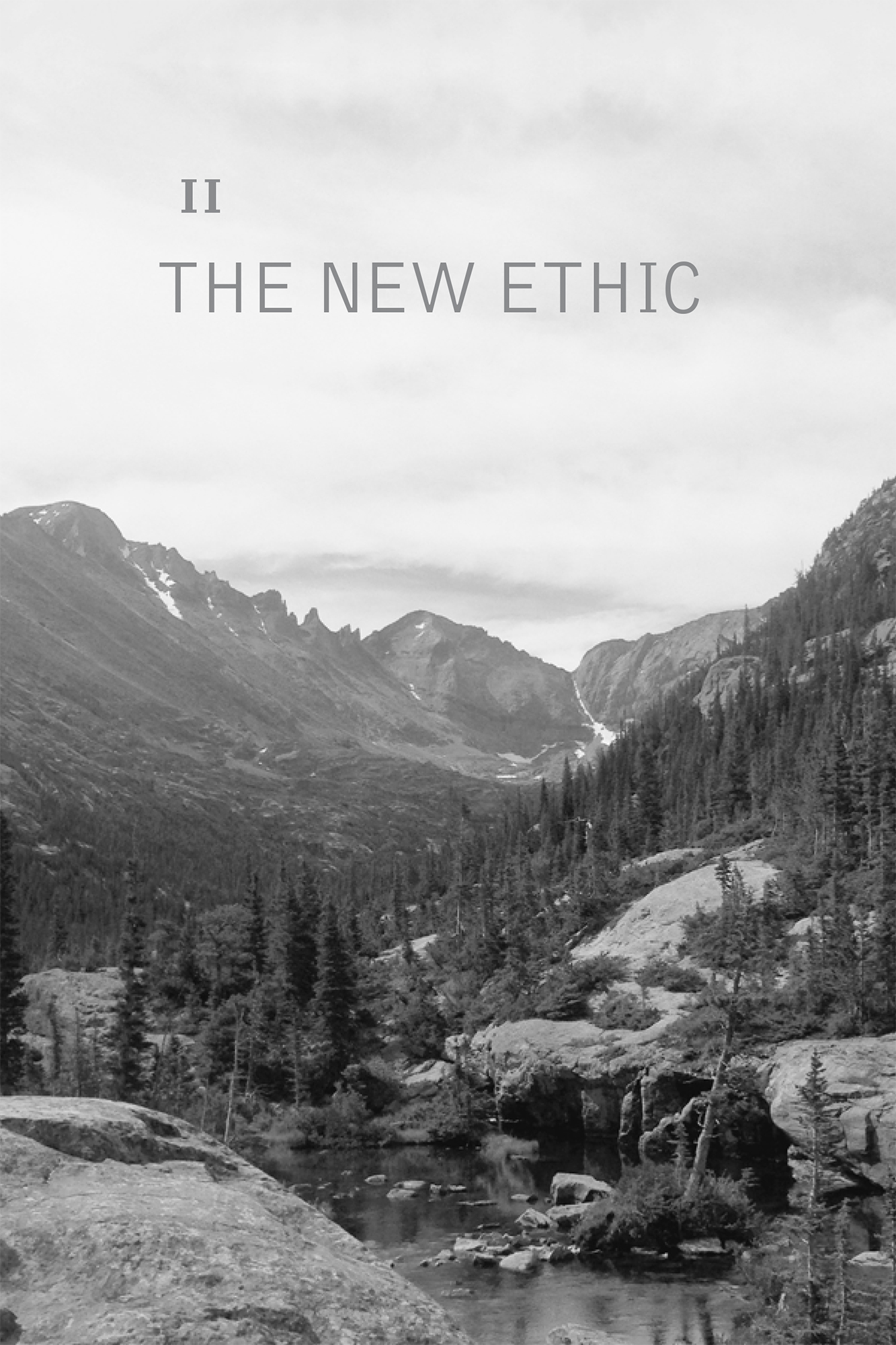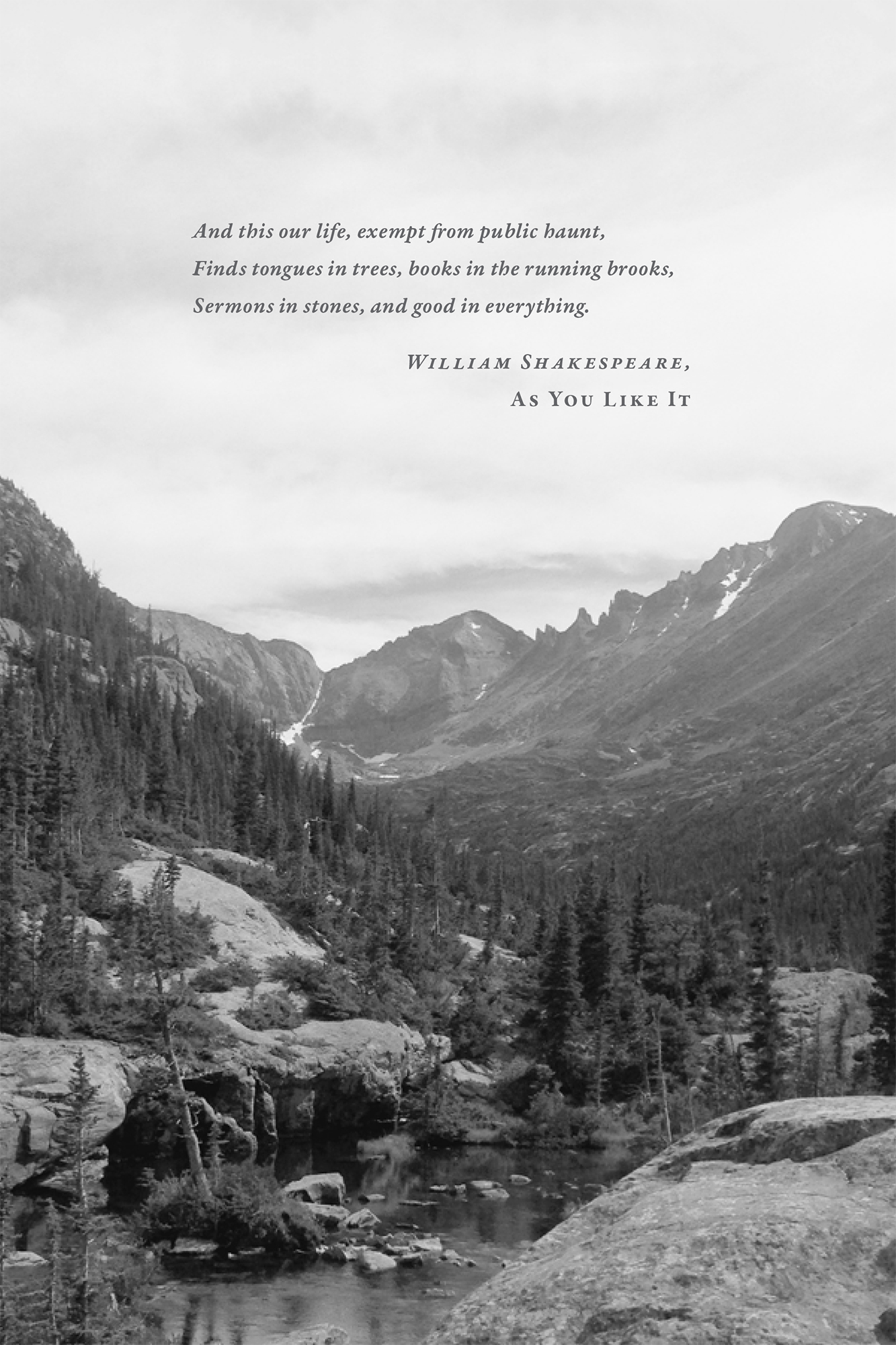

FOR THE FIRST HALF of the twentieth century, those who went off for adventure in the backwoods were a small band of uncommon people. After World War II a number of factors began to conspire to change all that: higher incomes, increased leisure time, what we call “improved” transportation (by which we mean “faster”). When the 1960s came along, bringing widespread alienation from urban and technological values, the backpacking boom began. In the 1970s it reached staggering proportions. In the 1980s the pressure on the backcountry eased: The numbers of recreationists leveled off, but they certainly did not decline. In fact, the number of people out there has been rising ever since.
We watched this boom hit our New England woods and hills and we winced at the changes it wrought. The caribou were gone from the windswept heights of Katahdin, but the people had come—by the hundreds and thousands. The shelters on Vermont’s Long Trail were crowded, carved up, and occasionally burned by hordes of inexperienced hikers. On Slide Mountain, the Catskills’ highest summit, near a rock where John Burroughs once bivouacked alone under the stars, the landscape grew blighted, trampled, and scarred in an ever-widening ring of hacked stumps as up to 100 campers per weekend sought that elusive summit solitude which Burroughs had enjoyed. Last time we were there, a dull-witted porcupine sat impassively in a fireplace, feeding on his accustomed fare, the trash of the previous weekend’s campers.
These are some of the changes we’ve seen in our New England since 1960. Across the country, the scene is similar. The Rockies and the Sierra and the Cascades have a little more room, but the popular magnets—the Tetons, Whitney, Rainier—are under the same kind of pressure as Katahdin, Slide, and the Long Trail. Deserts in the Southwest are crushed under the impact of recreationists heedless of the consequences of their fun. Glaciers on Alaska’s highest peaks stink with the accumulated wastes of climbing parties. In Wyoming’s Wind River Range, where some of our friends used to go to avoid the Tetons crowd, the once-pristine waters of Lonesome Lake became polluted and the still meadows were pocked with tent sites.
Even the Himalayas feel the crunch. Tenzing viewed the destruction of trees for tourists’ firewood along the popular trek routes and warned in his autobiography: “The tourists who come to Nepal to see the wilderness are actually destroying it as they go along.”
The changes are not all measured in numbers of hikers and their impact. In response to the lug-soled army, restrictions and regulations have descended on the long-prized freedom of the hills; one-rough trails have been tamed with bridges and steps; “facilities” have been provided and upgraded where campers were once on their own, the entire experience has been softened, the rough edges smoothed, the challenge finessed.
Gradually, though, at first almost imperceptibly, but then with mounting force, a further change spread across the land of the backcountry. Backpackers began to recognize the consequences of their own actions. A conscience awoke. Concerned about both the physical destruction of the natural environment and the degradation of the spirit of wildness that numbers, restrictions, and facilities imply, many hikers and campers began to grope their way toward a new backwoods ethic. Thoughtful managers of wild lands, who are daily involved with the problems of the backcountry, helped guide opinion in constructive channels, wisely recognizing that regulations are but a small if sometimes essential part of the answer. The newer guidebooks and magazines of that time, Backpacker, Wilderness Camping, and New England Outdoors promoted more environmentally conscious practices in how we use the woods in which we hike. The large hiking clubs, such as New England’s Appalachian Mountain Club and Green Mountain Club, embraced the new concerns. Especially noteworthy was the admirable reformation of the Adirondack 46ers. Not surprisingly, the Sierra Club was at the forefront in this campaign, publishing the first how-to book that placed emphasis squarely on environmental concerns: John Hart’s e. Two leaders of the National Outdoor Leadership School brought the procedures of minimum-impact camping to hikers’ attention with their excellent manual, Soft Paths. Their subtitle says it all: How to Enjoy the Wilderness without Harming It. (Now hikers and backpackers get a lot of what they want to know from various hiker websites.)
Here, in this second part of our book, we talk about this new backwoods ethic, as it implies changes primarily in the habits and attitudes of the individual hiker, but also in the policies and procedures of those who manage the wildlands in which we hike.
The new ethic has two equally important facets. One is the physical impact, which we can inflict or withhold, on the land. The other is harder to express: Call it the psychological or experiential or subjective or spiritual impact—the effect of our own actions on the experience that we and others enjoy (or fail to enjoy) in the backcountry. When we wrote the first edition of this book we tried to cram both into the same set of pages. We came to see that either the problems have grown or our perceptions of them are clarified and intensified, because now we think both sets of problems are so vital that we need two separate books. So in these pages we want to focus primarily on our physical effects on wildlands. If we do not preserve the physical environment out there—the real world of plants and soils, of trees and tundra, of pure waters and the good earth—if we do not protect those priceless resources, there won’t be much point in brooding over the spiritual. First things first. So let’s talk about brute physical impact.
We don’t mean to belittle the importance of the subjective experience. If that interests you too, as we hope it does, please take a look at our book, Wilderness Ethics: Preserving the Spirit of Wildness.
But for now we speak of cookstoves and sneakers and hammocks . . . and some new ways of looking at the same old woods and hills with an awakened environmental concern.